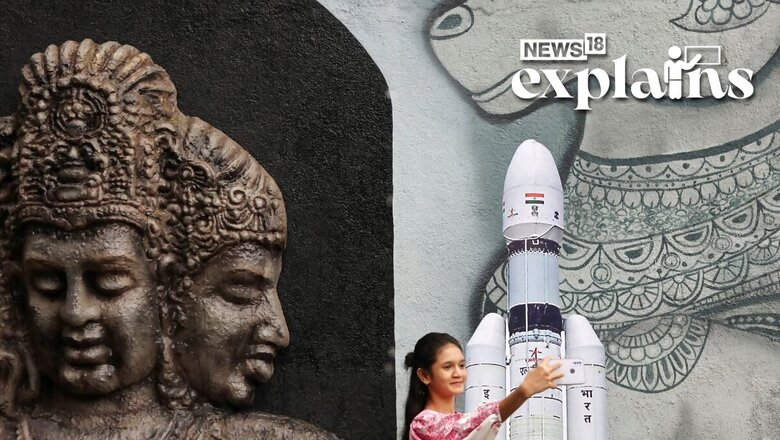
views
The Indian Space Research Organisation (ISRO) has successfully launched its third lunar mission, Chandrayaan-3, aboard the LVM3-M4 rocket. The launch took place at the scheduled time of 2:35 pm after a 25.30-hour countdown, with the rocket lifting off from the second launch pad and emitting thick plumes of smoke. A large crowd of spectators cheered as the rocket ascended into the sky.
The primary objective of the Chandrayaan-3 mission is to achieve a soft landing on the lunar surface, a technically challenging task that is planned for late August. If successful, India will become the fourth country to accomplish this feat, following the United States, China, and the former Soviet Union.
Chandrayaan-3 follows the Chandrayaan-2 mission, which did not achieve the intended soft landing on the moon’s surface in 2019, leading to disappointment among scientists.
According to ISRO officials, approximately 16 minutes after liftoff, the propulsion module will separate from the rocket and enter an elliptical orbit around the Earth, ranging from 170 km at its closest point to 36,500 km at its farthest. The propulsion module, along with the lander, will then embark on a journey of over a month to reach the lunar orbit, ultimately coming within 100 km of the moon’s surface.
Once it reaches the desired altitude, the lander module will initiate its descent for a soft landing in the south pole region of the moon. This landing is expected to take place on either August 23 or 24, as stated by ISRO scientists.
How Did Sriharikota Become the Choice for Launches?
Sriharikota, home to the Satish Dhawan Space Centre (SDSC) or Sriharikota High Altitude Range (SHAR), was chosen as India’s satellite launching station in 1969. The island covers an area of approximately 43,360 acres with a 50 km coastline. Several factors influenced the selection of Sriharikota, as explained by Deviprasad Karnik, Director of Publication and Public Relations at ISRO (Indian Space Research Organisation), in a report by News Minute.
Proximity to Sea
One crucial consideration is proximity to the sea, as per the report. If a rocket deviates from its path or trajectory, it may need to be destroyed to prevent it from causing destruction on land. Therefore, spaceports near the sea or deserts, where there are no habitation and minimal risk, are preferred.
Close to Equator
Additionally, being close to the Equator allows for fuel savings during launches. As India is located towards the southern region of the Equator, a launch site in the southern part of the country, with its long coastline, is advantageous in terms of travel distance and fuel efficiency, the report explains.
Geographical Advantage
Another important factor is a stable geographical platform. The land should be solid enough to withstand the intense vibrations produced during a launch. Sriharikota meets this requirement, with a strong soil composition and hard rock beneath it.
While these are the primary criteria for selecting a spaceport location, other considerations, such as geo-magnetic fields and climate, also play a role in the decision-making process.
Many Successful Launches
Over the years, Sriharikota has witnessed numerous successful launches, including tech-development launches, Indian spacecraft launches, student satellite launches, re-entry missions, and the launch of foreign satellites from 23 countries.
While reports suggest that Sriharikota is the second-best located spaceport globally, after the Kennedy Space Centre in the United States, Karnik states that each site has its own risks and benefits. For example, the French Guiana Space Centre benefits from its proximity to the Equator, while the space centre in Russia has advantages due to its location in massive deserts in the north.
Overall, Sriharikota’s selection as a launch site takes into account its proximity to the sea, its location near the Equator, and its stable geological conditions, making it a suitable choice for India’s space missions.


















Comments
0 comment